EYE ON THE SKY
Raspberry space cocktail
When is a nebula not a nebula? When it’s two nebulae in one
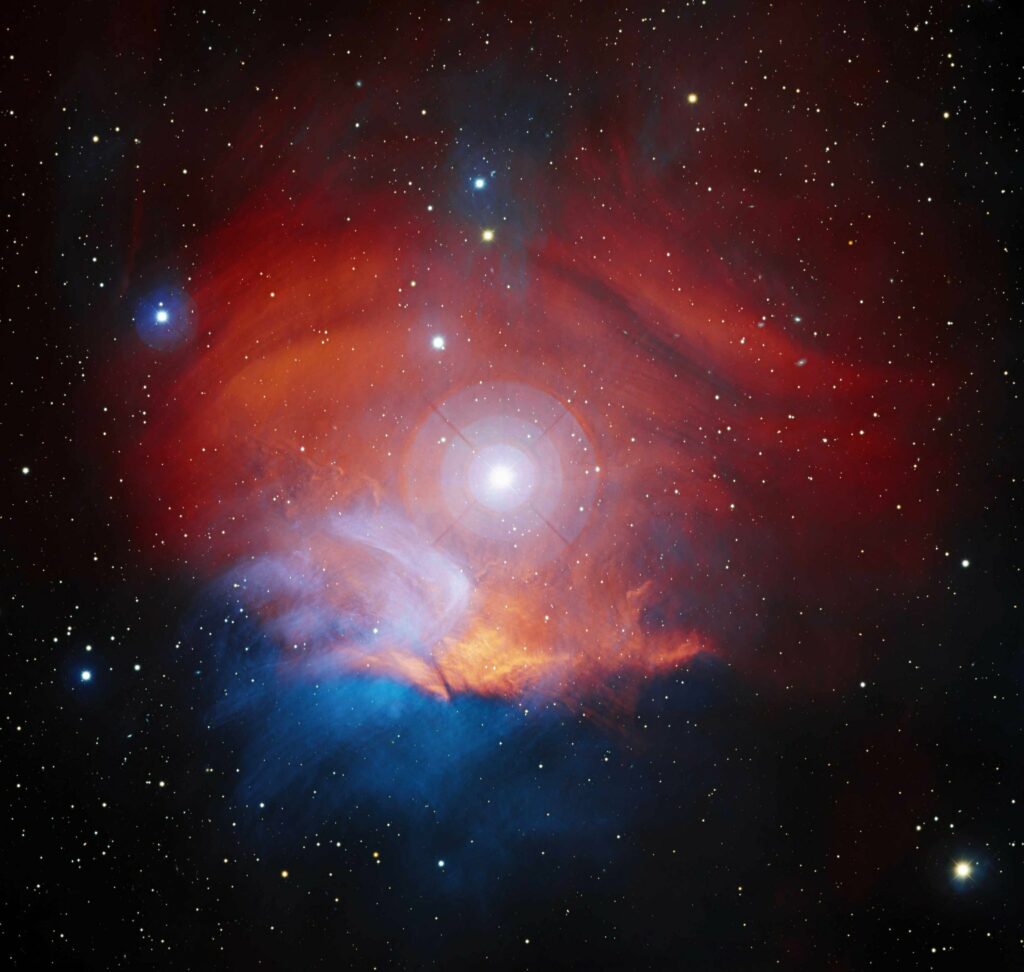
NICHOLAS U MAYALL TELESCOPE, 19 APRIL 2023
Captured by the Nicholas U Mayall 4-metre Telescope at the Kitt Peak National Observatory in Arizona using its new Mosaic-3 detector, this is LBN 867, the Raspberry Nebula, which lies in the constellation of Orion. Look more closely, though, and you can see that LBN 867 is actually three objects in one: two nebulae and a powerful main sequence star.
This blue-white star, HD 34989, lies at its heart. Surrounding it is the red emission nebula Sh2-263 – a diffuse region of hydrogen ionised by the heat and light energy coming from the star, and so giving off a reddish glow. Meanwhile, towards the bottom left of the photo, an adjacent cloud of cosmic dust is reflecting that same light, forming the blue reflection nebula vdB 38.
Somewhat confusingly, another celestial object is sometimes called the Raspberry Nebula – namely the planetary nebula IC 418 in the nearby constellation of Lepus (not seen here). But for sheer majesty, it can’t quite compete with LBN 867’s trio of delights.
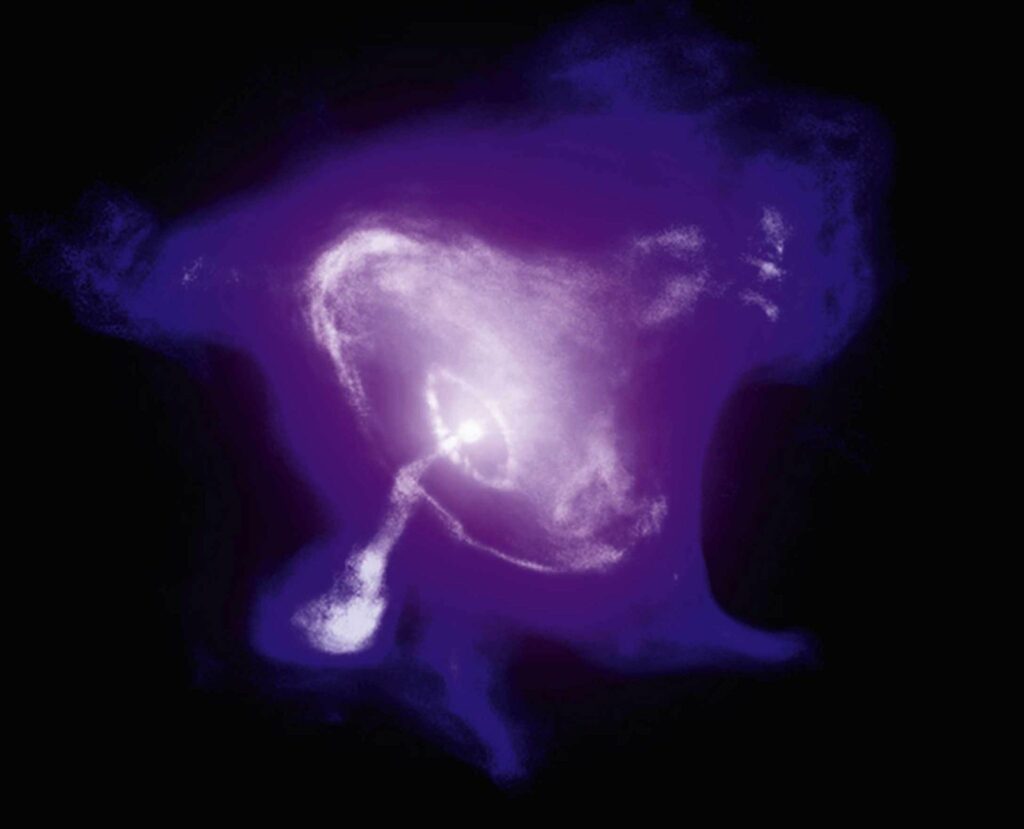
Purple haze
IXPE/CHANDRA X-RAY OBSERVATORY, 10 APRIL 2023
Combining data captured by NASA’s Imaging X-ray Polarimetry Explorer (IXPE) satellite and Chandra X-ray Observatory, this image shows the Crab Nebula, a supernova remnant some 6,500 lightyears from Earth that’s also known as Taurus A, M1 or NGC 1952. The nebula was formed by a supernova that was recorded by Chinese astronomers in 1054, and the picture clearly shows the Crab Pulsar that lies at its heart, as well as the turbulent magnetic field that surrounds it.
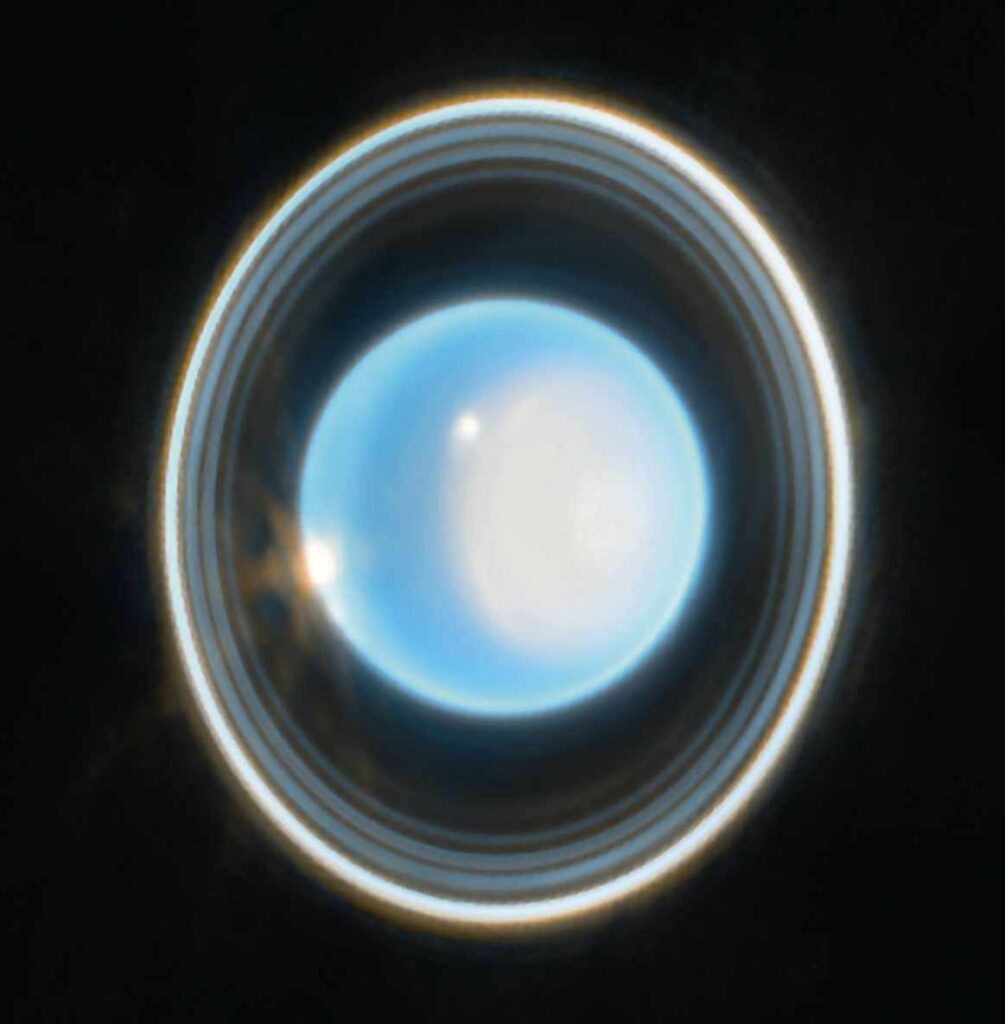
Eighth wonder
JAMES WEBB SPACE TELESCOPE, 6 APRIL 2023
William Herschel speculated that Uranus may have a ring system way back in the 18th century, but it wasn’t until 1977 that its existence was proven, while our first images of the rings were provided by Voyager 2 in 1986. Those first grainy black and white pictures can’t compare, though, to this stunning new JWST image which shows 11 of the 13 known rings, as well as an area of brightening at the planet’s northern pole, which currently faces the Sun.
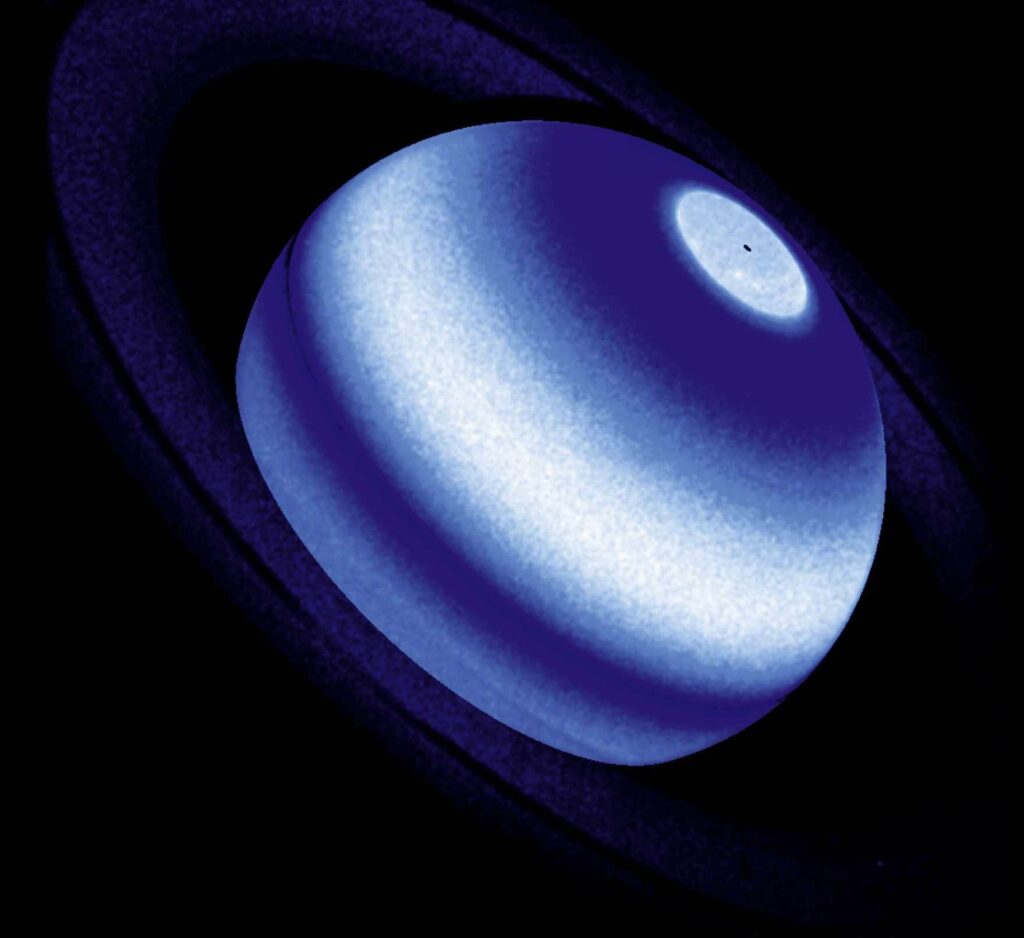
A hard rain’s gonna fall
HUBBLE SPACE TELESCOPE/CASSINI/VOYAGER, 30 MARCH 2023
You’d expect icy particles falling from space to have a chilling effect, but as this UV image of Saturn shows, that’s not necessarily true. Generated using UV data from the Voyager 1, Voyager 2, Cassini, Hubble and International Ultraviolet Explorer missions, it shows a band of higher UV radiation below Saturn’s rings, denoting higher temperatures – thought to be caused by particles hitting the upper atmosphere. It’s hoped this discovery may help astronomers identify which exoplanets also have rings.
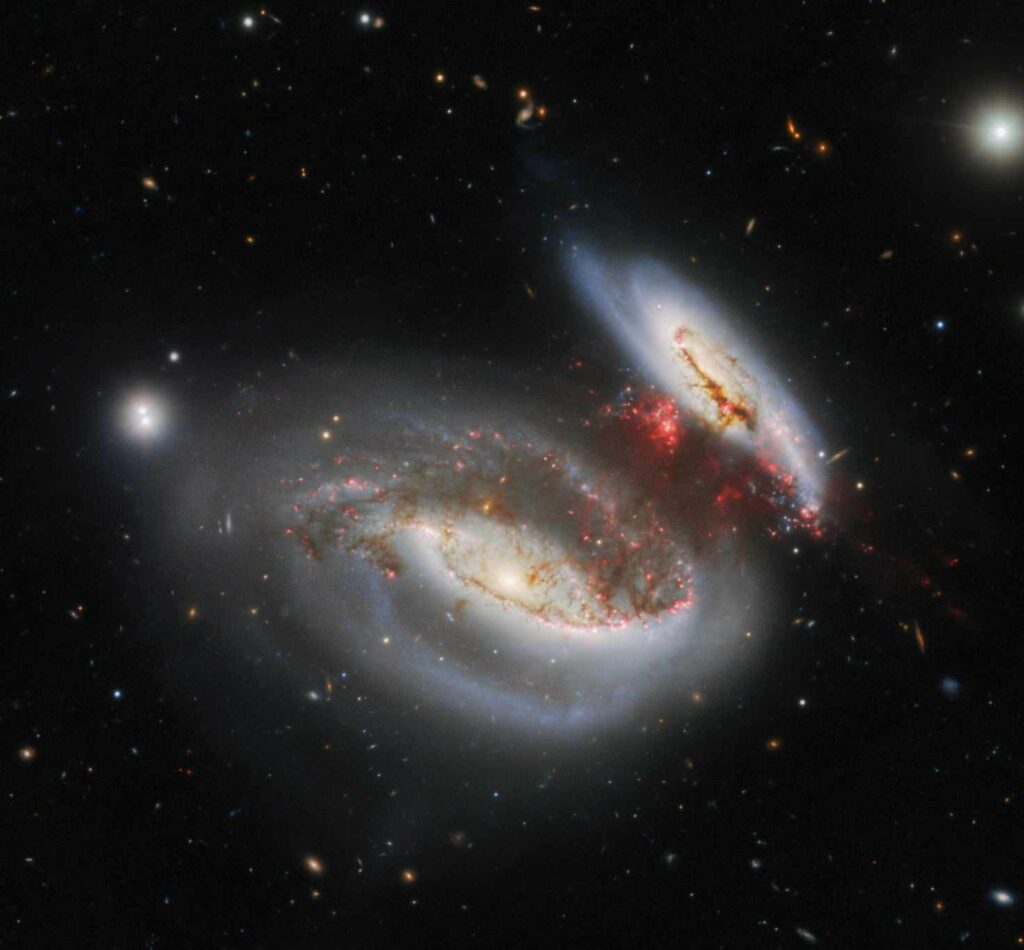
Head-on collision
GEMINI NORTH, 29 MARCH 2023
This image captured by the Gemini North telescope shows the aftermath of a head-on collision between the two Taffy Galaxies, UGC 12914 (left) and UGC 12915 (right), which lie about 180 million lightyears from Earth and smashed into one another 25–30 million years ago. Galaxy collisions often result in a redistribution of gas and the formation of new stars, but this one created a ‘bridge’ between the two, thought to be too turbulent for star formation to occur.
MORE ONLINE
Explore a gallery of these and more stunning space images
www.skyatnightmagazine.com/bonus-content/GOKTED4
PHOTOS: KPNO/NOIRLAB/NSD/AURA/T.A. RECTOR (UNIVERSITY OF ALASKA ANCHORAGE/NSF’S NOIRLAB) IMAGE PROCESSING: T.A. RECTOR (UNIVERSITY OF ALASKA ANCHORAGE/NSF’S NOIRLAB) M. ZAMANI (NSF’S NOIRLAB) & D. DE MARTIN (NSF’S NOIRLAB), X-RAY (IXPE: NASA) (CHANDRA: NASA/CXC/SAO), NASA/ESA/CSA/STSCI, NASA/ESA/LOTFI BEN-JAFFEL (IAP & LPL), INTERNATIONAL GEMINI OBSERVATORY/NOIRLAB/NSF/AURA